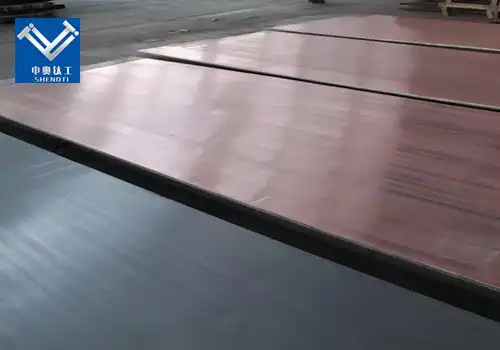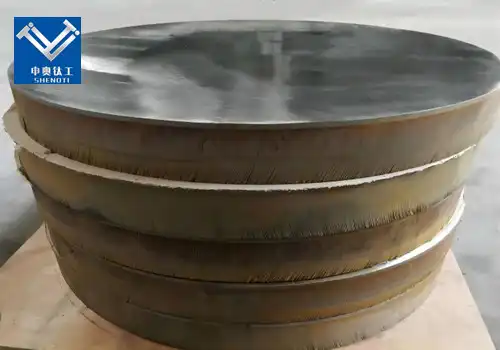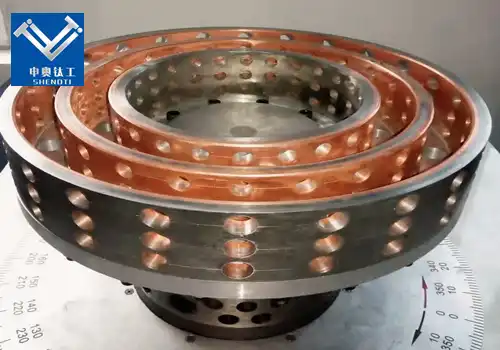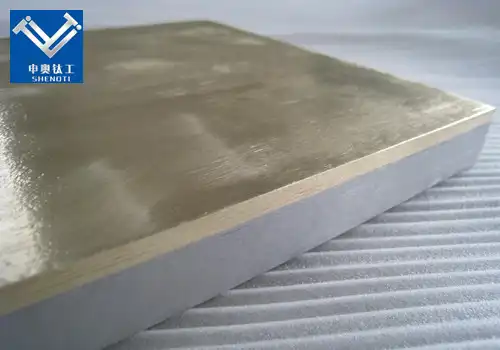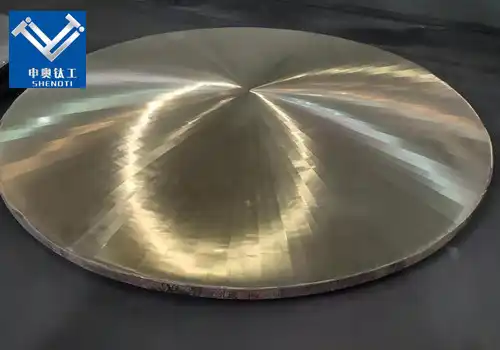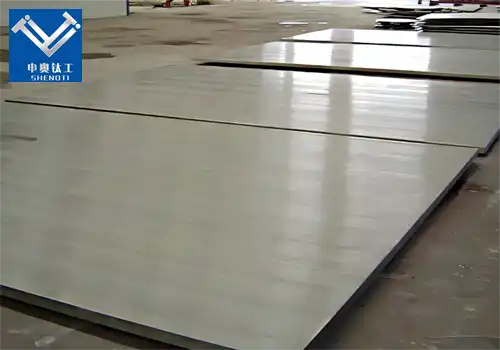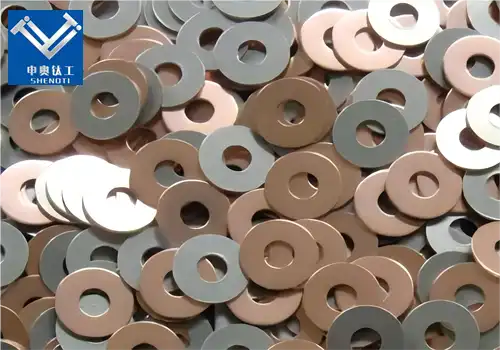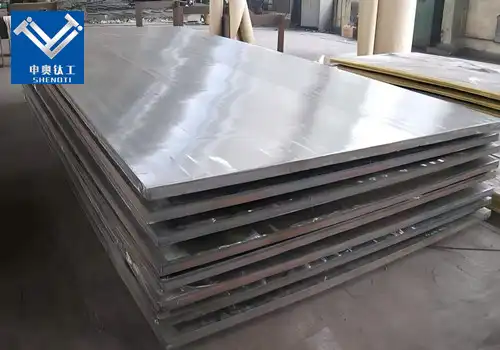
Applications of B30 Copper Steel Clad Plate
2025-07-05 15:44:02
What Is a B30 Copper Steel Clad Plate?
Understanding the Structure and Composition
A B30 copper steel clad plate is a bimetallic composite material made by bonding a layer of B30 copper alloy with a carbon or stainless steel base, typically through explosion welding or hot rolling. This unique structure combines the superior conductivity and corrosion resistance of B30 copper with the mechanical strength and cost-effectiveness of steel.
What Is B30 Copper Alloy?
B30 is a marine-grade copper-nickel alloy, also known as CuNi30Mn1Fe, containing approximately 70% copper, 30% nickel, along with iron and manganese. This composition makes it especially resistant to seawater corrosion, erosion, and biofouling—ideal for use in heat exchangers, condensers, and marine piping systems.
Why Choose B30 Copper Steel Clad Plate?
1. Excellent Corrosion Resistance
B30 copper cladding offers excellent resistance to:
Seawater corrosion
Sulfide and ammonia stress corrosion
Biological fouling in marine environments
This makes the clad plate a preferred material in shipbuilding, offshore oil platforms, and desalination systems.
2. Outstanding Mechanical Strength
Thanks to its steel substrate, the B30 copper steel clad plate maintains high mechanical strength, pressure resistance, and impact toughness—suitable for high-pressure heat exchanger shells, pressure vessels, and industrial pipelines.
3. Enhanced Thermal and Electrical Conductivity
The B30 copper surface layer provides excellent thermal and electrical conductivity, critical for:
Power plants
Thermal energy systems
Electric contact components
4. Cost Optimization Through Cladding Technology
Instead of using solid copper or solid B30 alloy, manufacturers can achieve similar performance at a lower cost using clad technology, which minimizes copper usage while maintaining surface performance.
Applications of B30 Copper Steel Clad Plate
Marine and Offshore Engineering
B30 copper is widely used in marine environments. When clad onto steel, it enhances the service life of seawater cooling systems, marine condensers, pumps, and heat exchanger tubesheets.
Power Generation and Thermal Systems
The B30 copper steel clad plate is ideal for:
Steam turbine condensers
Thermal power station cooling units
Electric boiler systems
Its high heat transfer efficiency and corrosion resistance extend the durability of thermal energy components.
Chemical and Petrochemical Industry
In corrosive environments, such as refineries, chemical reactors, and gas scrubbers, the B30 clad plate provides the corrosion barrier needed to ensure safety and longevity.
Desalination and Water Treatment
With its resistance to seawater and brine corrosion, this clad material is often used in:
Multi-stage flash (MSF) desalination
Reverse osmosis (RO) pretreatment
Brine circulation systems
How Is B30 Copper Steel Clad Plate Manufactured?
Explosion Bonding Process
The most common method is explosion bonding, which uses a controlled detonation to bond the copper and steel layers at the molecular level. This technique ensures:
Metallurgical bonding without melting
Uniform thickness and strong adhesion
No intermetallic compounds at the interface
Hot Rolling Technology
Another method is hot roll cladding, where the copper and steel are heated and pressed together, forming a strong bond through thermal diffusion and pressure welding.
Each method offers unique advantages depending on product size, required thickness, and performance specifications.
Product Specifications and Standards
Common Specifications
|
Parameter |
Value |
|
Copper Alloy Grade |
B30 (CuNi30Mn1Fe) |
|
Steel Base |
Q235B / Q345R / 304 / 316L |
|
Cladding Thickness |
0.5mm to 5mm |
|
Total Plate Thickness |
3mm to 50mm |
|
Bonding Method |
Explosion + Rolling |
|
Surface Finish |
Polished / Brushed / Custom |
Standards Compliance
-
GB/T 13238 (China National Standard for Metal Clad Plates)
-
ASTM B432 (Nickel-Copper Clad Plate Standards)
-
ASME Boiler and Pressure Vessel Code
Benefits Over Conventional Materials
|
Feature |
B30 Copper Steel Clad Plate |
Solid Copper Plate |
Carbon Steel Plate |
|
Corrosion Resistance |
★★★★★ |
★★★★☆ |
★☆☆☆☆ |
|
Mechanical Strength |
★★★★☆ |
★★☆☆☆ |
★★★★☆ |
|
Heat Conductivity |
★★★★☆ |
★★★★★ |
★★☆☆☆ |
|
Cost Efficiency |
★★★★☆ |
★☆☆☆☆ |
★★★★★ |
This comparative advantage highlights why B30 copper steel clad plates are increasingly favored in industries requiring both durability and cost-effectiveness.
Quality Control and Inspection
Key Quality Measures
Ultrasonic testing to detect bond flaws
Shear strength testing to confirm metallurgical bonding
Corrosion resistance testing using seawater simulation
Bending and flattening tests to assess mechanical behavior
Manufacturers typically provide material certificates, third-party inspection reports, and non-destructive testing results to assure quality.
FAQs About B30 Copper Steel Clad Plate
Is B30 copper the same as CuNi30?
Yes. B30 is the Chinese designation for CuNi30Mn1Fe, a copper-nickel alloy known for excellent seawater resistance and commonly used in heat exchangers and marine structures.
How long does B30 copper cladding last in marine environments?
With proper maintenance, the clad layer can resist seawater corrosion for 20–30 years depending on the operating conditions.
Can the plate be welded or machined?
Yes. B30 copper steel clad plates can be machined and welded using proper techniques, with care to avoid delamination or damaging the clad surface.
Why Work with Us for B30 Copper Steel Clad Plate?
Our Manufacturing Strengths
Over 15 years of experience in bimetallic clad materials
Full control over explosion bonding and hot rolling processes
Customized thickness, width, and length available
Compliant with international standards and client specifications
Industries Served
Marine & Shipbuilding
Energy & Utilities
Petrochemical Processing
Water Desalination Plants
Heat Exchange Manufacturing.
By choosing B30 copper steel clad plates, companies can reduce costs, extend equipment life, and ensure operational efficiency even in the harshest environments.
Contact Us
Looking for a reliable supplier of B30 copper steel clad plates?
📧 Email: zh@baojiti.com.cn
🌐 Website: www.shenaocladplate.com
YOU MAY LIKE











